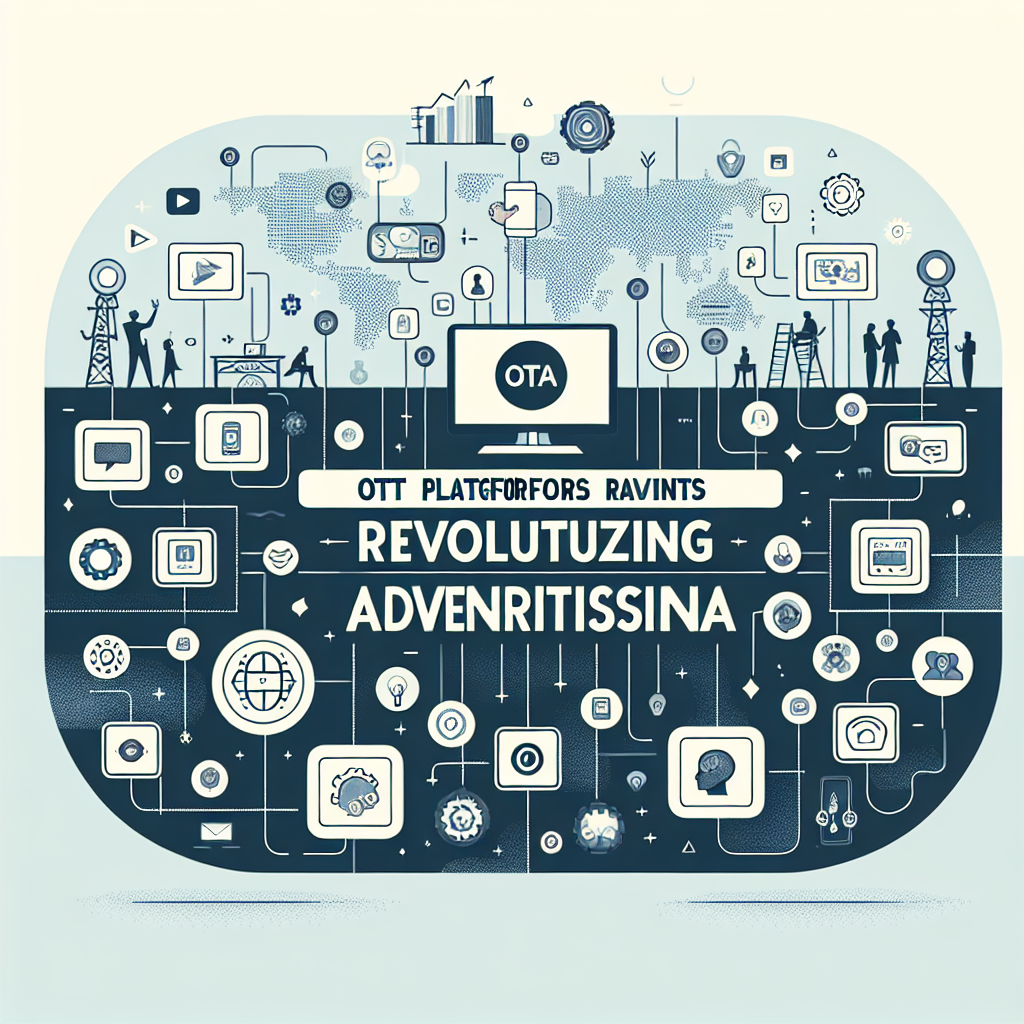The Role of Programmatic DOOH (Digital Out-of-Home) Advertising
Introduction: The Digitization of Physical Spaces
The convergence of digital technology and physical environments has transformed traditional out-of-home advertising into a dynamic, data-driven medium through programmatic digital out-of-home (pDOOH) advertising. This evolution represents what media theorist Marshall McLuhan might recognize as the ultimate extension of digital media—bringing the targeting precision and flexibility of online advertising into physical spaces. According to WARC's Global Ad Trends report, pDOOH spending is projected to reach $15.9 billion by 2025, representing a 14.7% compound annual growth rate from 2022. This growth is driven by the unique ability of pDOOH to bridge the physical-digital divide while addressing growing consumer resistance to invasive digital advertising. As renowned marketing strategist Mark Ritson observes, "While most digital channels face increasing scrutiny, fragmentation, and ad avoidance, DOOH offers the rare combination of digital capabilities with the inherent viewability and brand safety of physical media." This article examines the strategic role of programmatic DOOH in the modern marketing mix, analyzing its technological foundations, measurement challenges, and unique place in an increasingly complex omnichannel landscape.
1. The Technological Framework of Programmatic DOOH
The transformation from static billboards to dynamic, programmatically-traded inventory required significant technological advancement:
a) Supply-Side Infrastructure Evolution
The digitization of physical displays and development of specialized SSPs. Example: JCDecaux's transformation of 67,000+ traditional sites into DOOH inventory connected through their VIOOH SSP has enabled real-time trading of previously fixed media, with their London implementation reducing campaign activation time from 5 days to 37 minutes.
b) Demand-Side Integration
Specialized and omnichannel DSPs enabling programmatic execution. Example: The Trade Desk's implementation of DOOH buying within their omnichannel platform allowed Unilever to seamlessly integrate DOOH into broader programmatic strategies, improving overall campaign ROAS by 23% through coordinated messaging across channels.
c) Environmental Data Utilization
Leveraging contextual signals for dynamic creative and targeting. Example: McDonald's UK campaign with Talon Outdoor utilized weather API integration, automatically activating McFlurry ads when temperatures exceeded 24°C, resulting in a 35% sales increase compared to non-weather-triggered placements.
2. Attribution and Measurement Frameworks
Measuring pDOOH effectiveness requires specialized approaches that bridge physical and digital realms:
a) Mobile Location Data Integration
Using anonymized device movement to measure exposure and impact. Example: Automotive brand Volkswagen partnered with location intelligence firm Placed to measure footfall attribution, demonstrating that consumers exposed to their pDOOH campaign visited dealerships at a 24% higher rate than unexposed audiences.
b) Computer Vision Audience Measurement
Camera-based technologies providing anonymized demographic and attention metrics. Example: Cosmetics retailer Sephora's implementation of Quividi's computer vision technology enabled demographic-based dynamic creative optimization, increasing relevant engagement metrics by 41% compared to standard scheduling approaches.
c) Multi-Touch Attribution Models
Specialized attribution frameworks that incorporate physical media touchpoints. Example: Financial services provider American Express developed a proprietary attribution model that incorporated pDOOH exposures alongside digital channels, revealing that campaigns including pDOOH delivered a 37% higher customer acquisition rate than digital-only approaches.
3. Strategic Integration in the Marketing Mix
Sophisticated brands leverage pDOOH's unique capabilities through strategic integration approaches:
a) Physical-Digital Convergence Strategies
Coordinating pDOOH with mobile and digital experiences. Example: Nike's "React Land" campaign used pDOOH installations that invited passersby to scan QR codes, creating personalized avatars that appeared on the screens in real-time—generating 48,000 direct engagements and a social reach exceeding 2 million impressions.
b) Moment-Based Marketing Architectures
Aligning messaging with contextual relevance and consumer mindsets. Example: Rideshare company Uber deployed a dynamic pDOOH strategy targeting urban commuters during evening rush hours and inclement weather, automatically adjusting bid pricing based on these conditions and reducing their cost-per-acquisition by 31%.
c) Sequential Messaging Frameworks
Orchestrating consumer journeys across physical and digital touchpoints. Example: Travel brand Expedia implemented a three-stage messaging strategy across pDOOH, mobile, and social that sequentially introduced destinations, highlighted offers, and delivered conversion messages—increasing booking rates by 28% compared to non-sequenced approaches.
4. Data Privacy Evolution and Contextual Renaissance
Privacy regulation is reshaping pDOOH's strategic advantage:
a) Post-Cookie Targeting Advantages
pDOOH's contextual nature provides resilience against identity challenges. Example: Consumer packaged goods giant Procter & Gamble shifted 18% of their programmatic display budget to pDOOH, citing its effectiveness in reaching relevant audiences without reliance on personal identifiers, achieving a 29% higher return on ad spend compared to cookie-dependent channels.
b) Anonymous Audience Intelligence
Aggregated data approaches that maintain effectiveness while preserving privacy. Example: Retail brand H&M worked with Vistar Media to develop privacy-centric audience targeting using anonymized and aggregated movement patterns, increasing store visitation rates by 21% while ensuring GDPR compliance.
c) Contextual Relevance Optimization
Leveraging environmental signals rather than personal data. Example: Quick-service restaurant Chipotle deployed a lunch-focused campaign that programmatically activated based on proximity to business districts, time of day, and competitive locations, resulting in a 42% increase in lunchtime foot traffic.
5. The Future Evolution of Programmatic DOOH
Several emerging technologies are poised to further transform the pDOOH landscape:
a) Computer Vision-Powered Creative Optimization
AI-driven understanding of physical contexts to enhance relevance. Example: Automotive manufacturer Audi piloted computer vision technology that analyzed traffic patterns and vehicle types near displays, dynamically highlighting different vehicle features based on the observed audience composition, improving engagement by 37%.
b) Augmented Reality Integration
Blending digital and physical experiences through interactive DOOH. Example: Entertainment company Warner Bros. implemented AR-enabled DOOH displays for a movie release, allowing passersby to interact with characters through their smartphones, generating 2.3 million interactions and increasing ticket pre-sales by 26%.
c) Retail Media Network Integration
Connecting in-store digital screens to broader programmatic ecosystems. Example: Grocery retailer Kroger integrated their in-store digital display network with their retail media platform, enabling CPG brands like PepsiCo to programmatically target shoppers based on anonymized purchase behavior, resulting in a 45% increase in campaign ROI.
Conclusion: DOOH as the Bridge Between Physical and Digital
As programmatic technologies continue transforming DOOH, its strategic value lies in its unique position at the intersection of physical presence and digital capabilities. According to OOH advertising expert Nancy Fletcher, "Programmatic DOOH represents the rare marketing channel that combines the emotional impact and universal reach of traditional media with the precision and flexibility of digital." For marketers navigating an increasingly fragmented media landscape, pDOOH offers a powerful bridge between physical and digital consumer experiences.
Call to Action
For marketing leaders seeking to leverage programmatic DOOH effectively:
- Integrate pDOOH into omnichannel DSP strategies rather than treating it as a separate channel
- Develop measurement frameworks that capture both immediate impact and cross-channel effects
- Test contextual targeting approaches that leverage environmental rather than personal data
- Explore dynamic creative optimization capabilities that respond to real-world conditions
- Consider pDOOH as a strategic hedge against the deprecation of personal identifiers
Organizations that recognize pDOOH not merely as a digitized billboard but as a sophisticated bridge between physical and digital experiences will unlock its full potential in the evolving media landscape.
Featured Blogs

BCG Digital Acceleration Index

Bain’s Elements of Value Framework

McKinsey Growth Pyramid

McKinsey Digital Flywheel

McKinsey 9-Box Talent Matrix

McKinsey 7S Framework

The Psychology of Persuasion in Marketing

The Influence of Colors on Branding and Marketing Psychology








